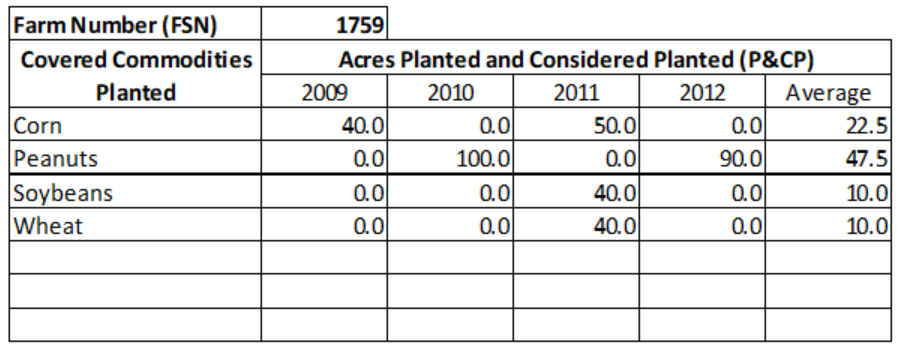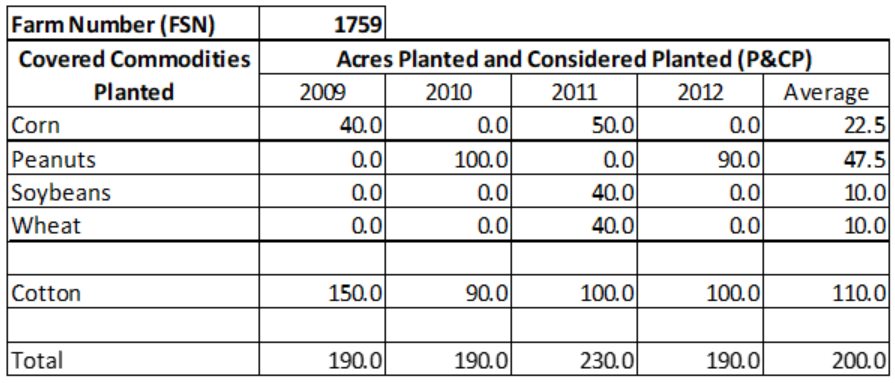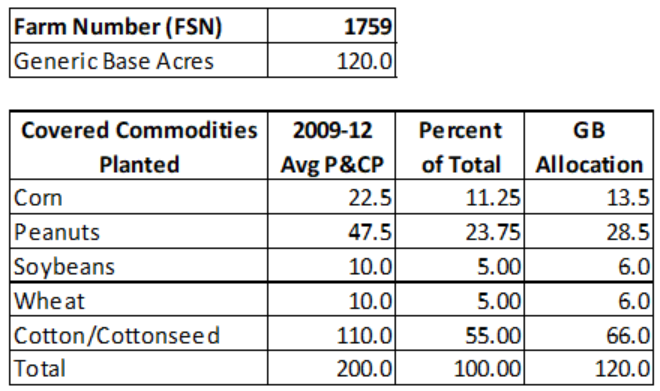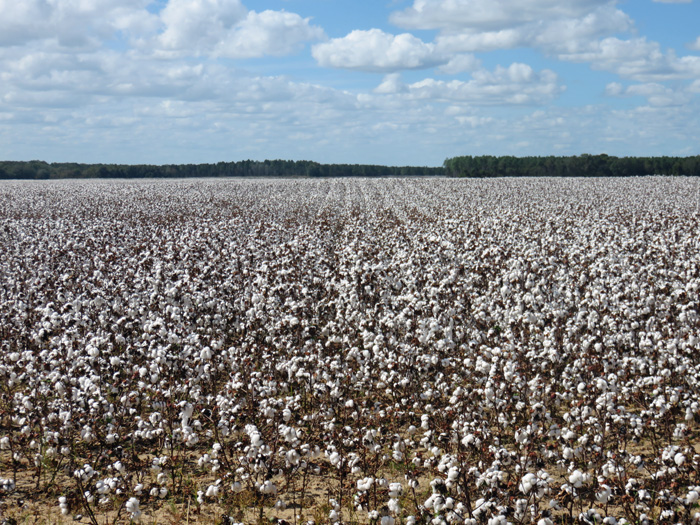Don Shurley, UGA Emeritus Cotton Economist
With the 2014 farm bill, cotton base on a farm became “Generic Base.” If you’ll recall, cotton base on a farm was frozen (could not be increased or decreased), but all other types of base on a farm (base “covered commodities” like corn, soybeans, peanuts, wheat, etc.) could be retained as ,or reallocated based on acres planted from 2009-2012.
Producers on a farm then had to choose Agriculture Risk Coverage (ARC) or Price Loss Coverage (PLC) for all covered commodities. However, cotton is not eligible for ARC and PLC. Cotton’s “safety net” is STAX, but STAX has not been as well utilized and accepted by growers as expected. From a policy standpoint, cotton has been at an income risk management disadvantage, as compared to other crops. For this reason, remedies have been sought that would provide income support for cotton production.
One proposal sought by cotton industry leadership has been to make cottonseed a covered commodity and eligible for PLC as an “Other Oilseed” under the current 2014 farm bill. This attempt was unsuccessful last year when then Secretary of Agriculture Tom Vilsack concluded that he lacked authority to make such a designation, and that other provisions of the farm bill also made such a designation unworkable. In May of this year, efforts that included a cottonseed policy in the FY17 Omnibus spending bill fell short and cottonseed was not included.
Recent developments have been more positive and encouraging. On July 12, the House Appropriations Committee approved its FY18 Ag Appropriations bill which included language encouraging USDA to provide assistance, including a cottonseed program. On July 20, the Senate Appropriations Committee approved its FY18 Ag Appropriations bill also including language supporting a cottonseed policy beginning with the 2018 crop.
Details of what was in the “legislative language” of the Senate Ag Appropriations bill have been publicly released. This includes a suggested PLC Reference Price, a suggested PLC Payment Yield for cottonseed, and elections for how the current Generic Base on a farm would be converted to cottonseed base and/or other covered commodity bases.
To have a cottonseed program, this would come from the farm’s Generic Base. All other bases now on the farm (permanent bases of covered commodities) would not be reduced. The Senate Ag Appropriations bill language provides the following terms for how the Generic Base on a farm would be treated1:
- The cottonseed program would apply only to farms with Generic Base acres under the 2014 farm bill—previous cotton base acres under the 2008 farm bill.
- For farms with Generic Base, but no covered commodity or cotton has been planted for the period 2009 through 2016, the Generic Base would be converted to “Unassigned Base” and this Unassigned Base would be ineligible for ARC/PLC for the remainder of the 2014 farm bill.
- For farms with Generic Base that have planted covered commodities or cotton during 2009-2016, the landowner will have two choices of what to do with the Generic Base on the farm:
Option 1. Generic Base would be converted to cottonseed base at the higher of 80% of the Generic Base or the average of 2009-2012 cotton acres planted but not to exceed the amount of Generic Base. Any remaining Generic Base acres would become Unassigned Base and ineligible for ARC/PLC.
Option 2. Generic Base would be converted to cottonseed base and other covered commodity bases proportionately, based on acres planted in 2009-2012. All Generic Base acres on the farm would be reallocated and none would be designated as Unassigned.
To better understand the choice between Option 1 and Option 2, let’s look at a hypothetical situation. We start with the same 2009-2012 crop history that was used in 2014 to make the decision to retain or reallocate the bases of covered commodities.
Now, let’s add the cotton acreage to this for the same period, 2009-2012. Including cotton, let’s suppose the acreage history now looks like this:
The average acres planted per year of each covered commodity and cotton for the period 2009-2012, including zero years, is shown. Let’s now assume the farm has 120 acres of Generic Base (previous cotton base under the 2008 farm bill), Option 2 would reallocate the 120 acres of Generic Base on the farm as follows:
So, in our example farm 1759, the farm has Generic Base and a covered commodity (including cotton/cottonseed) was planted during 2009-2012. The landowner would have 2 choices:
Option 1-Convert the 120 acres Generic Base to the higher of 80% of Generic Base (96 acres), or the average of 2009-2012cotton acres planted (110.0 acres) to cottonseed base (cottonseed base could not exceed 120 acres). So, if Option 1 were elected in this example there would be 110 acres of cottonseed base and the remaining 10 acres of what was Generic Base would become Unassigned Base. OR–
Option 2-Convert the farms 120 acres of Generic Base to the covered commodities bases as shown including cotton/cottonseed. If option 2 were elected, there would be 66 acres of cottonseed base in this example and the farm would gain permanent base of the other covered commodities as shown.
Summary and Implications
This paper discusses and illustrates how Generic Base acres on a farm might be treated under a proposal to make cottonseed an Other Oilseed and eligible for PLC under Title I of the current 2014 farm bill. The illustrations and discussion are believed to be accurate, but not guaranteed and could be altered in future legislation or eliminated.
Under provisions contained in the recent Senate Ag Appropriations bill, landowners of a farm with Generic Base and a 2009-2016 history of planting covered commodities or cotton on the farm can choose 1 of 2 alternatives to convert Generic Base to cottonseed base and base of other covered commodities. Landowners must choose and participation is not optional. It is believed that the choice of option will be on a farm-by-farm basis.
If a farm (FSN) has Generic Base but no covered commodity or cotton has been planted for the period 2009-2016, the Generic Base will be converted to Unassigned Base, and the Unassigned Base ineligible for ARC/PLC for the remainder of the 2014 farm bill. What will happen to Unassigned Base in the next farm bill is unknown?
The cottonseed proposal, if adopted, would begin with the 2018 crop year. Effective with the 2018 crop year, there would no longer be Generic Base on a farm. Cottonseed base and any additional permanent base gained under Option 2 would be eligible for ARC/PLC, but there would no longer be the provision of acres planted to covered commodities being “assigned” to Generic Base and eligible for ARC/PLC.
The cottonseed proposal and an extension of the Cotton Ginning Cost Share Program (CGCS), if adopted, are seen as a “bridge” to assist cotton producers in the interim until the longer-term can be addressed in the next farm bill, beginning with the 2019 crop year2. Further, while both House and Senate appropriations bills endorse a cottonseed policy, it remains uncertain if the cottonseed policy will be enacted later this year. What happens in a new farm bill for cotton/cottonseed may depend on what happens later this year?
The decision between Option 1 and Option 2 is clearly going to depend on 2009-2012 planting history and which resulting base(s) are expected to be more valuable in terms of a safety net and expected payments for the remainder of this farm bill and, more importantly, potentially longer term in future legislation. So, the decision and best choice for the landowner and producers will depend on the other provisions of the cottonseed policy (Reference Price, Payment Yield, etc.) and also how other covered commodities are expected to fare under a continued ARC/PLC.
It is important to note that permanent bases on the farm (the base of covered commodities the farm now has as a result of the 2014 “retain or reallocate” decision, are not impacted by the cottonseed policy and choices. All the cottonseed policy is doing is converting the Generic Base on the farm to cottonseed base and, if Option 2 is elected, potentially gaining additional permanent base of other covered commodities.
It is also important to note that planting history under the 2014 farm bill has no bearing.
Acknowledgements
Appreciation is expressed to the National Cotton Council for review of the methodology. Appreciation is expressed to the Georgia Cotton Commission for funding support.
- Overview of Cottonseed Policy in Senate Agriculture Appropriations Bill, National Cotton Council, July 2017.
- Shurley, Don. Background and Summary of Recent Cotton Policy Developments, Department of Agricultural and Applied Economics, University of Georgia, http://www.caes.uga.edu/departments/ag-econ/extension.html, “Recent Cotton Policy Developments—Cotton Policy Update”, July 27, 2017.
- Friday Feature:Malone Pecan Festival Tractorcade - November 21, 2025
- October 2025 Weather Summary and Winter Outlook - November 14, 2025
- Friday Feature:The Untold Story Behind the Beef for Dinner Tune - November 14, 2025

